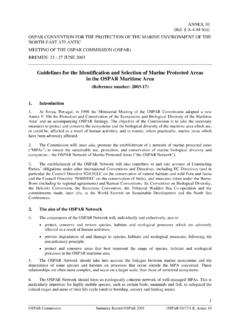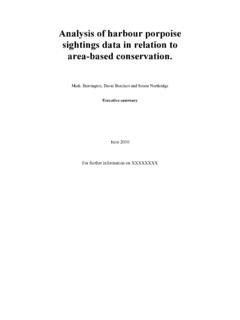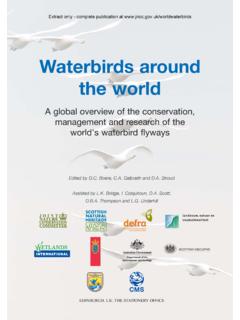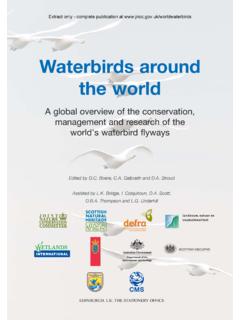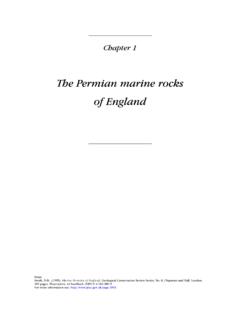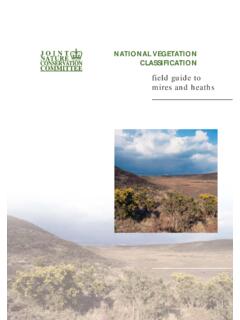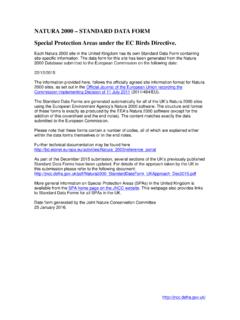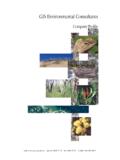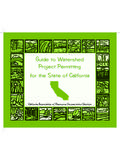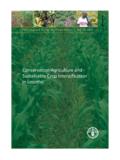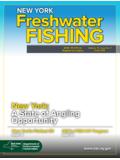Transcription of Handbook for Phase 1 habitat survey - JNCC
1 Handbook for Phase 1habitat surveyA technique for environmental auditJNCC Handbook 30/03/2010 10:03 Page 1 Handbook for Phase 1 habitat survey - a technique for environmental auditRevised reprint 2010 JNCC 1993, 2003, 2004, 2007(2), 2010 JNCC Handbook 17/03/2010 07:05 Page 3 Preface - 2010 editionThe Phase 1 habitat classification and methodology, as published originally by the Nature ConservancyCouncil in 1990 and reprinted with minor revisions by JNCC, has been widely used throughout Britain for adiverse range of purposes. It has largely stood the test of time, and continues to be used as the standard' Phase 1' technique for habitat survey across the responsibilities of the former Nature Conservancy Council are now held by the three country agencies,Natural England, Scottish Natural Heritage and the Countryside Council for Wales, with JNCC nowmaintaining common standards across the UK.
2 Only a few minor changes have been made for the 2010 edition of the Handbook . Appendix 9 provides acompendium of the main changes and developments since 1990. JNCC has no plans for furtherdevelopment of the Phase 1 standard Handbook 17/03/2010 07:05 Page 4 ContentsPagePart 1 Operational of Phase 1 of Phase 1 of methodology for Phase 1 purpose of Phase 1 survey82 Planning a Phase 1 of survey of aerial photography and satellite of scale for of existing of public and training of and office and office in the of the final of habitat and analysis of habitat estimation by the line-intercept of Phase 1 survey of hierarchical alphanumeric habitat codes224 Urban of 2 survey245 Using the colour code mapping of codes266 Target of target note note descriptions287 Data area notes29 JNCC Handbook 17/03/2010 07.
3 05 Page 58 The survey report309 Comparison of Phase 1 survey classification with other SSSI habitat mapping scheme and the NCC/RSNC Draft Phase 1 habitat Mapping National Vegetation Classification33 Part 2 Field Manual 351 habitat classification and definitions38 AWoodland and scrub38 BGrassland and marsh39 CTall herb and fern41 DHeathland41 EMire42 FSwamp, marginal and inundation44 GOpen water45 HCoastland47 IRock exposure and waste48 JMiscellaneous49 Acknowledgements50 References51 Appendices1 Phase survey habitat classification, hierarchical alphanumeric referencecodes and mapping colour codes for use on monochrome field maps and fair maps613 Dominant species codes644 Key words and status categories for target notes675 Hypothetical examples of target notes706 Standard recording forms717 The NCC/RSNC habitat classification758 Relationship between Phase 1 habitat categories and National VegetationClassification Communities in British Plant Communities Volumes 1-5779 Technical developments and other changes since 1990 - key points79 Additional references for Appendices 8 and 9 only 80 JNCC Handbook 17/03/2010 07:05 Page 6Pa r t 1 Operational guidelinesJNCC Handbook 17/03/2010 07:05 Page 7 JNCC Handbook 17/03/2010 07.
4 05 Page 81 Introduction7 This manual presents a standardised system forclassifying and mapping wildlife habitats in allparts of Great Britain, including urban areas. Themanual provides information on the planning andexecution of habitat surveys and is based on theexperience of a large number of surveys whichhave been carried out in the past decade. It ishoped that this publication will facilitate the surveyof the remaining areas of Britain. It would be ofgreat benefit to nature conservation and todevelopment planning if every local authority werein possession of a Phase 1 habitat survey and if acomprehensive Phase 1 survey database existedfor each area of the Nature Conservancy Council (NCC) hasplayed a leading role in devising andimplementing standardised methods of biologicalsurvey and the NCC Phase 1 survey methodologyhas been widely used throughout Britain.
5 It is veryimportant that a standardised system is used andthat surveys are carried out to a consistent level ofdetail and accuracy, so that the results of onesurvey may be compared with those of anotherand maps and statistical data may be of Phase 1 surveyThe origins of Phase 1 survey go back to the1970s, when a system was devised for rapidmapping of wildlife habitats over large areas ofcountryside. The method was used originally insouth-east Scotland and later in Cumbria and WestYorkshire (NCC 1979a, 1979b).After the passing of the Wildlife andCountryside Act 1981, this system was modifiedand extended for use in mapping habitats on Sitesof Special Scientific Interest (SSSI) (NCC 1982,1983a). The SSSI habitat mapping system wasconsidered to be too detailed for use in Phase 1surveys of the wider countryside and a simplified,but compatible, version was produced for thispurpose (NCC 1983b).
6 This version has beenwidely used for large-scale habitat surveys such asthe Phase 1 survey of Cumbria (NCC 1986a, Kelly& Perry 1990), although a number of large-scalesurveys initiated before its publication (forexample Somerset and Dorset - NCC 1983c,1983d) used the full SSSI mapping draft manual on habitat survey was producedin 1986 (NCC 1986b) and this afforded anopportunity to clarify a number of habitatdefinitions and to make some minor changes inthe habitat classification and coding. Althoughunpublished, this draft was widely circulated andhas been used as the basis of most of the Phase 1surveys of the late 1980s in England, Wales present manual is a revision of the 1986draft and introduces further revisions of habitatdefinitions, mainly clarifying what has becomeaccepted practice in existing survey but alsointroducing some changes in areas of ambiguityand confusion.
7 In particular, the mires section hasbeen revised, the dune classification has beensimplified and the rather large semi-improvedgrassland category has been split into two, morefunctionally convenient, units. The classificationcovers the full range of terrestrial and intertidalhabitats, but no attempt has been made to coversub-tidal 1982 all versions of the NCC Phase 1habitat mapping system have been based on thesame hierarchical classification system and arethus, in most respects, compatible with of Phase 1 surveyThe aim of Phase 1 survey is to provide,relatively rapidly, a record of the semi-naturalvegetation and wildlife habitat over large areas ofcountryside. The methodology presented in thismanual is applicable both to surveys of specifichabitats, such as grasslands or woodlands, and tosurveys of the whole countryside, in which everyparcel of land is classified and recorded.
8 However,this manual is written largely with general surveysin mind, because these are more habitat classification presented here isbased principally on vegetation, augmented byreference to topographic and substrate features,particularly where vegetation is not the dominantcomponent of the habitat . Vegetation is relativelysimple to observe, identify and record and canthus be surveyed fairly rapidly over large areaswithout much difficulty. Because most animals aremobile, fugitive and small, they are often muchmore difficult to observe and record in the field, socomprehensive, large-scale faunal surveys are nota practical nature and condition of the vegetationembodies information about many of the living andnon-living components of the environment. A studyof the vegetation can thus provide an effectivemeans of classifying and surveying , a Phase 1 habitat survey should befollowed up by a Phase 2 survey .
9 This defines theJNCC Handbook 17/03/2010 07:05 Page 98vegetation of selected areas more precisely interms of its plant communities, preferably asdefined by the National Vegetation Classification,(Rodwell in prep.) and may include surveys ofanimal species and communities. Phase 2 surveycan be used to describe the range of variationpresent for a particular habitat , thus indicating therepresentation required in the SSSI series. Thesites at which Phase 2 surveys are to be targetedcan be identified from the Phase 1 surveyinformation. Occasionally it is desirable to carryout Phase 2 survey concurrently with Phase 1. Afurther stage in survey - Phase 3 - involves an evenmore detailed survey of the extent and distributionof plant and animal species on sites. The objectiveis to produce detailed information on thefrequency or abundance of communities andspecies for site management and monitoringpurposes.
10 Information may be gathered onaspects such as the population size of individualspecies or their reproductive of methodology for Phase 1surveyBriefly, the method of Phase 1 survey is asfollows. Ideally every parcel of land in the entiresurvey area is visited by a trained surveyor and thevegetation is mapped on to Ordnance Surveymaps, usually at a scale of 1:10,000, in terms ofsome ninety specified habitat types, usingstandard colour codes. In practice much of themapping can be carried out from public rights ofway, using binoculars at relatively short ranges toidentify the vegetation. Aerial photographs mayalso be useful, especially in urban and in uplandareas, as an adjunct to ground use of colour codes on the final habitatmaps allows rapid visual assessment of the extentand distribution of different habitat types.
